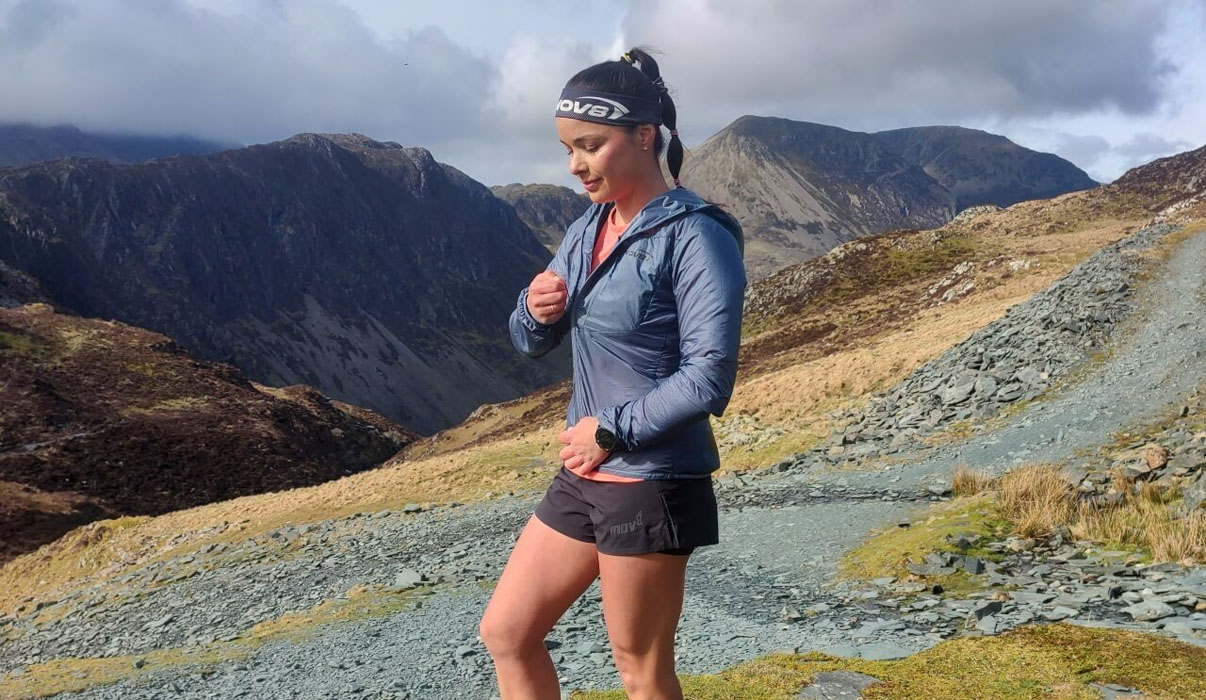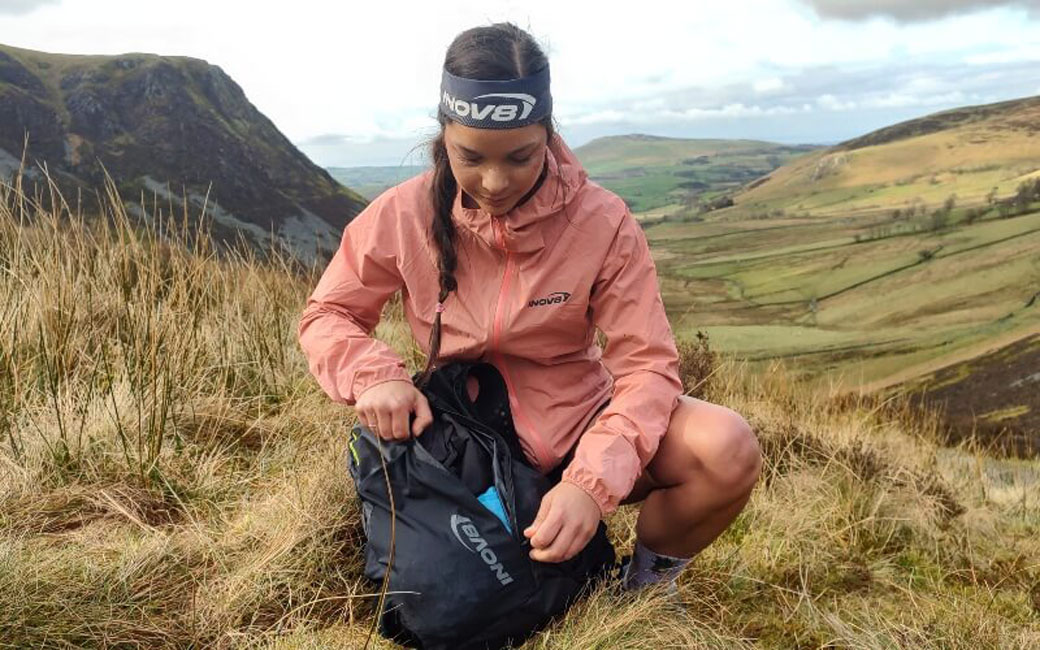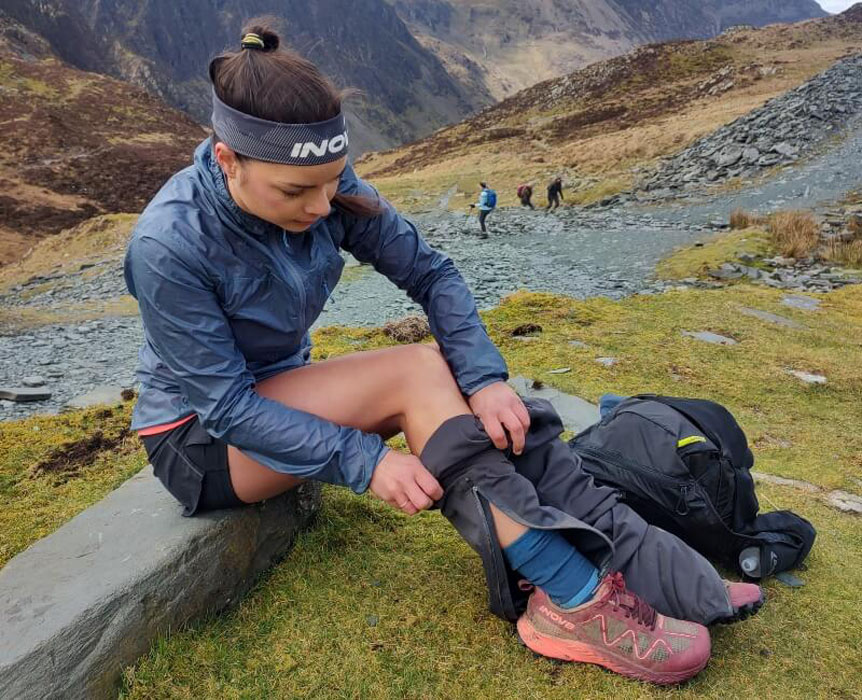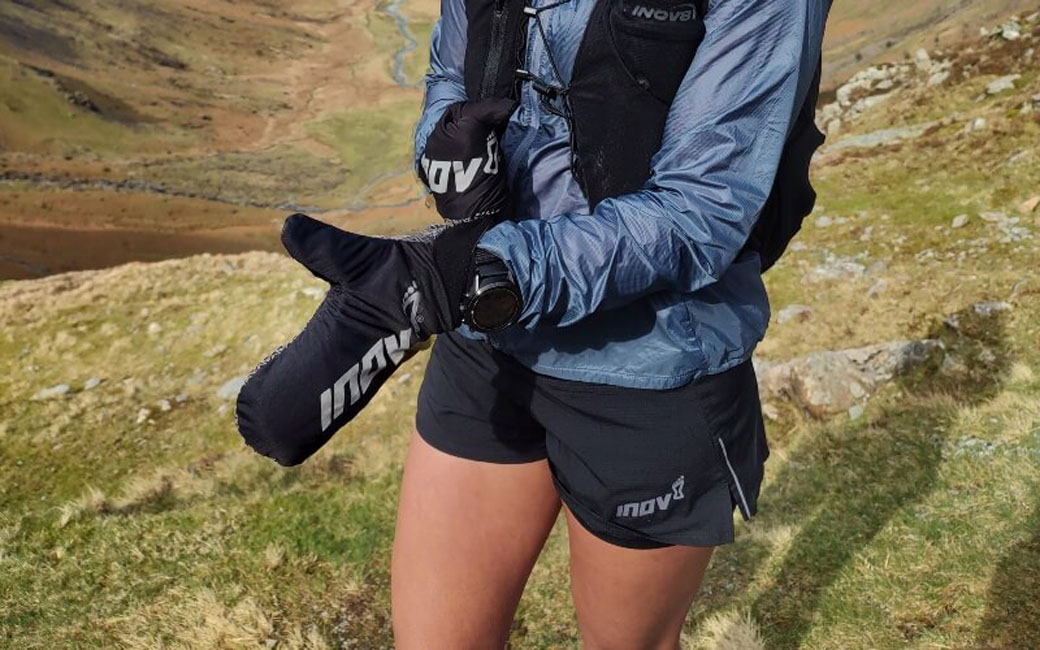
Whether you're heading for the hills or hitting the lower trails, your choice of layers is paramount in keeping you comfortable in the great outdoors. Here record-breaking ultrarunner Sarah Perry gives her advice on how to layer clothing for running.
Wearing the wrong combination of layers is a great way to become uncomfortable quickly. We've all been there - sweating buckets in our heaviest raincoat in a summer shower or cutting winter adventures short as we just can't get warm enough. Choosing and layering clothing carefully will ensure that you can proceed with your run like the pro - whatever the weather!
WHAT IS THE LAYERING SYSTEM FOR RUNNING?
The classic layering system comprises three layers: a base, mid and outer layer. These can be combined to keep you dry, warm or comfortable in any conditions. When we're talking about layering, we tend to be thinking about our upper body, but it's important not to neglect our legs and extremities too, to make for the most comfortable running experience.
BASE LAYER
Worn closest to your skin, this layer needs to stay dry. A synthetic base layer which wicks away sweat is ideal, alternatively in colder weather a merino base layer will also help you feel dry and help you regulate your temperature (did you know that INOV8 now does merino base layers?). These are also a great choice for multi day adventures too as they're odour resistant - just hang you top up and you're good to go again the next day!


MID-LAYER
When running, it's rare that you'll need a mid-layer. The purpose of this layer is to sit over your base layer and trap air to retain body heat, while still allowing moisture to escape. If it's seriously cold then a thin layer such as the TRAIN ELITE long sleeved top or even the PERFORMANCE HYBRID insulated jacket will keep you warm and comfortable.
OUTER LAYER
Your outer layer needs to be somewhat breathable, otherwise you will likely find that the inside of your layer is wet due to perspiration. Showers? The STORMSHELL waterproof jacket is the perfect outer later. Never ending rain? Opt for a thicker raincoat such as the VENTURELITE jacket.
Cold and dry but windy? Stick a windproof jacket on and avoid your waterproof to help elongate its life. Windproof layers are highly breathable and offer maximum ventilation, they are a super lightweight piece of kit that can really pack a punch. Although having a range of jackets for different weather scenarios can seem like a big investment, looking after your waterproofs and washing them regularly can help them last longer.
A bonus tip is to always wear a long sleeve top under your jacket - this will help improve its breathability, keep you dry and stop the jacket clinging to your skin.


DON'T FORGET YOUR LEGS!
You like to wear shorts all year round? I hear you. However, it's good to have a back-up just in case you do get cold or need to stop for any reason. RACE ELITE tights are perfect for winter and a pair of waterproof trousers are a sensible outer option for rain. Even if it doesn't rain, there could be a significant wind chill!
PROTECT YOUR EXTREMITIES
In winter, I double up for good measure: two pairs of socks, two pairs of gloves and two headbands or wrags! The EXTREME THERMO socks are a great option for wet weather; made out of neoprene, they are designed to trap a thin layer of water between the sock and your foot which quickly becomes warm due to the insulating properties of the material. A thin pair of gloves with waterproof mittens over the top the perfect duo for cold, wet weather. Headbands, wrags or snoods can offer an extra layer of protection over your face and head.


THE IMPORTANCE OF A PACK
Whether you're at home with a 20L or prefer a nifty waist pack, a bag is essential to help you manage your layers. A waist pack is perfect for warmer weather or shorter outings when you might what to ditch a light waterproof and windproof layer. For longer adventures the RACEPAC 20 is your new best friend, easily fitting in plenty of layers, snacks and emergency gear.
OTHER TIPS FOR LAYERING
Consider minimum race kit lists carefully and make sure you've checked the weather - it's often worth packing extra kit for comfort and in case of emergency.
Do it now, not later - put your raincoat on before it starts raining or take your jacket off as soon as you realise you're hot.
FINAL THOUGHTS
The layering system is not a rule book, there are lots of variables to consider. When selecting your layers, it's important to understand the materials that you need, which will depend on where your adventures are based and in which season. We're all unique and layering choices that work perfectly for one person may not work as well for someone else. Check out Keeping Dry and Staying Warm by Stuart Smith and Steve Parsons for a more detailed dive into the science behind layering up effectively.
